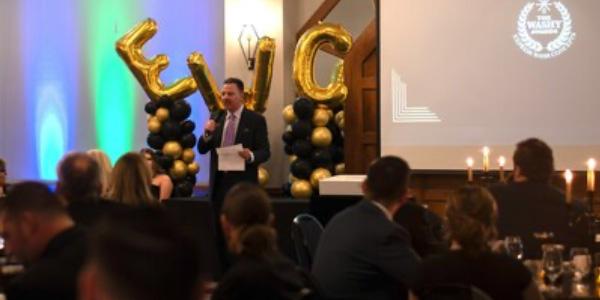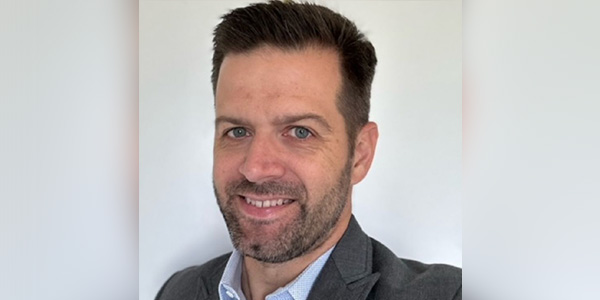At the heart of every carwash business model is a focus on customers and providing area-leading car care and cleaning results. On paper, it is a simplified plan; but in reality, every wash a location provides will result in two distinct outcomes: repeat or lost future business. Each and every car rolling onto a carwash’s property represents either a missed opportunity or, with proper planning and investments in the industry’s latest technologies, a chance for customer retention. Today, as competition tightens around the country, appealing to customers’ senses is becoming a powerful customer retention tool.
“Good or bad,” notes Marcus McLaughlin, marketing manager at Belanger Inc., “every trip through a carwash is a sensory experience.” The question, he adds, is whether or not that experience will make customers want to visit again or never return. “The sights and sounds in the wash bay all affect the customers’ perception of value, influencing how much they are willing to pay and how often (or whether) they come back,” continues McLaughlin.
While still important, carwash customers today are looking beyond clean car results. They expect more out of the businesses they patronize. Bright, tidy and modern locations are emerging over dark, old and unkempt carwashes. Incorporating new wash technologies and emphasizing cleanliness and professionalism with staff members can elevate customer experiences and produce profits for the competitive years ahead.
Light appeal equals heavy impact
Carwash professionals are embracing the use of light-emitting diode (LED) features on equipment and signage. In addition to this emerging technology’s benefits in the variety of costs, colors and shapes, successful carwashes are also finding customer satisfaction advantages in the use of LEDs. Simply adding LED features throughout a carwash can be a competitive difference and make that site memorable to customers.
“The human eye is wired to see three things: lights, color and motion. So, if you want to get a customer’s attention and keep it, colored, moving lights are a great way to do it,” notes McLaughlin. “Customers intuitively understand the precision engineering involved with LED-lighted wash wheels, [as an example], which is why they’re so captivated by them.”
Customers’ intense sense of curiosity, continues McLaughlin, helps actively market a carwash in real time, “pulling customers off the street and into the wash bay, and then tremendously enhancing their experience once they enter. The lighted wash wheels can (and should) be left cycling multiple colors 24/7, [year-round]. This actively markets the site before, during and after hours and helps every customer find the wash again through a phenomenon psychologists call the ‘beacon effect.’”
Even during this information-packed era in which customers are inundated with marketing messages, curiosity and impulse visits are steering traffic to your site. Simply put, customers want their cars cleaned first and foremost, but an emphasis on presenting value and elevating their experience is coming to the forefront. However, while LEDs and other modern features can help drive business in, defects and lack of functionality can push customers away.
“Having bright, clean [and] well-lit signs in the tunnel that tell the customers exactly what service they are receiving is a positive,” explains Matt Hord, training consultant for Brink Results LLC. “However having those same signs, but the lights don’t work and the sign [faces are] dirty, is a negative. Bright LED lights and scented soaps, as examples, positively impact the customer experience, whereas a dark tunnel with unscented soaps doesn’t project that feeling of clean and impacts negatively on customers.”
Experts say the benefits of investing in and maintaining modern equipment with advanced features, such as LEDs and improved materials, can result in positive returns on investments. But, building up customers’ sensory experiences in these ways requires a carwash and its staff to constantly inspect equipment, fix issues as needed and be proactive, rather than reactive.
Do not disturb carwashing
Put yourself in your customers’ shoes. A car is a family’s second biggest investment, just behind the purchase of a house, for many customers. You, playing the part of your customer, are proud of this investment and want to protect it. Now, imagine that you take your second biggest investment to your local carwash. As you go through the tunnel loud noises emerge, and your precious entity is being smacked around to the point you wonder if damage is occurring. Would you return?
“Noise is a big factor for a lot of customers. If a customer is going through the tunnel and hears a lot of noise, [his or her] first reaction is that something is wrong with the equipment or that the equipment is old. The newer materials used for mitters and other equipment have helped create a much quieter experience. Instead of big, heavy material slapping against vehicles, the newer material glides smoothly across the vehicles. The quieter the tunnel is, the better the [customer] experience,” asserts Hord.
While customers are attracted to bright lights, spinning brushes and mitters and scented soap or show-type wax applications (like the lava effect), when it comes to noise, the mantra today is the quieter, the better. There is a science behind muffling and lessening noise in carwashing, and our industry’s manufacturers have been hard at work over the past decade to find solutions.
According to McLaughlin, conventional wash media must spin at 90 or more rounds per minute (RPMs) to reach a vehicle’s surface. “That’s because it’s ‘droopy’ at rest and extends at high RPMs to touch and clean the vehicle,” he says. “This creates a significant problem for customers; measured sound levels ‘inside the car’ in a typical carwash with wash wheels spinning 90-plus RPMs can exceed 94 dB per wash wheel, [which is] about the same [noise level] as a kitchen blender on its high-speed setting.”
As mentioned, carwash equipment manufacturers have realized the impact that sound has on the overall customer experience and have made advancements in wash media. Today, adds McLaughlin, new developments stand to redefine the wash experience. “[This includes] foam wash media designed to clean while spinning as low as 30 RPMs.”
Manufacturers are able to dampen in-car noise levels through advanced materials as well as strategic design. One example of a new style of media uses self-supporting, thick foam “arms” that retain their working diameter at any RPM, even at rest.
“The ability to wash at much lower RPMs has many benefits,” notes McLaughlin. “For one, in-car noise levels are drastically reduced, peaking at just 79 dB. Because decibel levels are ‘logarithmic,’ not linear (an increase of approximately 10 dB represents a perceived doubling in volume), the 94 dB peak heard with conventional media at 90-plus RPMs generates a perceived volume more than twice as loud.”
Not only is today’s advanced equipment reducing noise levels, but cleaning performance is also being improved. In fact, the carwash professionals we interviewed for this article report that these improvements are helping owners and operators in several areas, including reduced labor needs, time and cost savings, more consistent wash results and higher profitability.
Keep it clean
Cleanliness is almost everything in the carwash industry. Today’s customers expect spacious, clean and well-illuminated areas for various reasons, ranging from safety concerns to peace of mind in their purchases. Regular litter removal on the lot and in the tunnel/bay areas of a site is critical since patrons equate cleanliness to quality. Notes Hord, maintaining the tunnel by ensuring that the walls and equipment are clean will enhance the appearance, fragrance, feel and functionality of the wash. “If there are windows, it is particularly important to keep them clean even though it is a challenge to do so,” he adds.
Since carwashes rely on water and often have dark, hard-to-reach areas, such as trenches and high ceilings, mold, mildew and bacteria often develop. While regular cleaning and a proper trash removal program are mandatory best practices, a complete and thorough cleaning of the location, specifically targeting hard-to-reach and often neglected areas, is recommended at least twice a year and possibly once a quarter for busy locations. Customers will equate the cleanliness of a carwash to its attention to detail, which they expect to see shine through with customer service and wash results.
Adding sensory-focused features and practices into your site will lead to competitive differences and set the goals of your business and its employees. And, these features are not just for show any longer. LEDs, for instance, are not only helping carwashers produce an attractive and fun experience for customers, but this technology also offers other impacts, such as marketing and package confirmation advantages, adds McLaughlin.
If you have attended recent carwash trade shows and events, you realize the influences that emerging technologies are having on our industry. These advancements all have a purpose aimed at enhancing the customer experience and elevating results.
“In carwashing, a truly innovative technology is ‘disruptive,’ meaning that it will change our business and upends old formulas and assumptions about what it takes to be successful. The possible consequences of ‘doing nothing’ or waiting too long could be rapid and severe. Be complacent at your own peril,” concludes McLaughlin.
Improving your carwash’s sensory experience first starts with doing your due diligence. Next time you drive to your wash, notice the surroundings from the street and as you enter the property. What stood out and what didn’t? Ask your employees to do the same, and then provide feedback. Entice your loyal customers to do the same for a discounted or free wash.
Successful carwashes are going beyond curb appeal and instead appealing to customers’ senses throughout the entire location.














